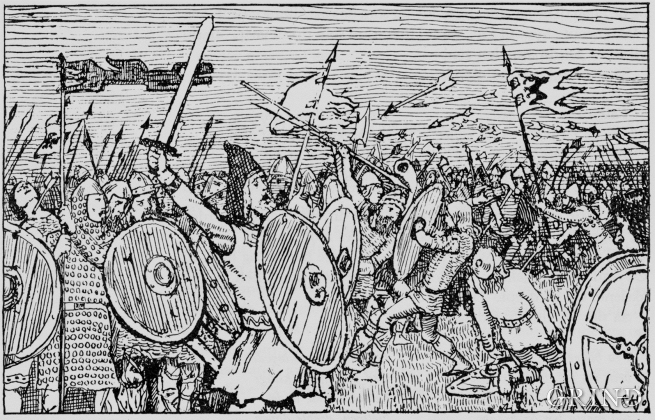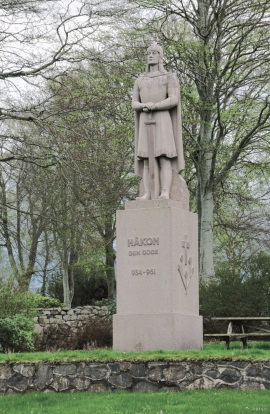Håkon Adalsteinsfostre (Håkon the Good) was visiting the King’s farm at Fitjar with his army, and was having a get-together with the farmers, when his brother’s sons went on the attack.
Snorre tells us that the king sat at the dinner table when it was announced that many armed ships came sailing from the south. The king prepared to fight and gathered his men and the farmers. Eirik’s sons landed with their army, and a bloody fight ensued with major losses on both sides.
The king was injured in his arm with an arrow. He boarded his ship and wanted to go north to the king’s farm at Alrekstad, but when they got as far as Håkonshella, the king was dying from the loss of blood. They carried him ashore, and this is where he expired, on the same spot where he was born. His men took the body to Seim in Nordhordland where he was buried in a mound.
Øyvind Skaldespillar, who was part of the king’s circle, recounts the battle with great drama. In “Håkonarmål” (the story of Håkon) he recounts the king’s fall, and the way he was received in Valhall (the Kingdom of the Dead).







